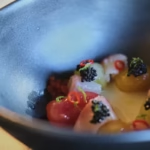In the swirling ecosystem of internet-born language, niche community lexicons, and evolving expressions of identity, the term Chanxoxos has begun surfacing with a kind of quiet persistence. It does not appear in dictionaries. It won’t trend on major social platforms. Yet for those attuned to emerging subcultural codes, one question keeps arising: What is Chanxoxos?
To answer that directly: Chanxoxo’s is a compound digital expression used in micro-creative and alt-digital communities as a marker of both personal identity and collective belonging. It operates simultaneously as a username fragment, a creative moniker, and a signal for shared emotional resonance. Its purpose is not to declare, but to suggest—a whisper of alignment in a world obsessed with visibility.
What makes Chanxoxos significant isn’t just what it is, but what it represents: a refusal of binary identity categories, a leaning into fluid creative expression, and a quiet re-centering of the personal in increasingly performative digital spaces.
The Linguistic DNA of Chanxoxos
At first glance, Chanxoxo’s looks like a stylized handle. The prefix “Chan” is often used in internet culture to connote familiarity, origin, or personalization—frequently showing up in Japanese internet forums or anime fandoms as a diminutive suffix. Meanwhile, “xoxo” typically conveys affection or intimacy, though in Chanxoxos it’s broken and doubled: “xoxos.”
Together, Chanxoxos becomes a semantic collage—part affectionate code, part playful encryption. The term resists clean definition but embraces emotional fluency. It doesn’t seek semantic clarity. It signals contextual familiarity. You know Chanxoxos if you feel it. If it resonates.
The Rise of Digital Monikers: Why It Matters
In a platform-centric world, names have become more than identifiers. They are performances. Brands. Algorithms feed us content based on how we label ourselves and others. But the proliferation of ironic, playful, or idiosyncratic usernames in niche communities shows a parallel trend: digital naming as soft resistance.
Chanxoxos fits into this landscape as an invented name that does not serve a marketing function. It’s not SEO-friendly, nor easily pronounceable to the uninitiated. It resists commodification by being deeply particular.
Its presence in closed digital groups (often hosted on Discord, Neocities, or curated artist servers) suggests a refusal to standardize identity. If traditional platforms ask you to optimize, Chanxoxos asks you to internalize.
Identity as a Liminal Space
The cultural relevance of Chanxoxo’s goes beyond usernames. In many circles, it’s adopted as a creative persona or soft avatar—a way to be present without being surveilled. Artists, writers, coders, and dreamers use it as a proxy. A cloaked signature. A second self.
Rather than expressing identity as something solid and permanent, Chanxoxos encourages porousness. One can embody the term briefly—during a creative season, a project, or a mental state—and then let it go. This liminality offers protection and freedom.
In queer, neurodivergent, and artistically experimental spaces, Chanxoxos has become a placeholder for safe exploration. An anonymous intimacy. A concept-as-costume.
From Visual Aesthetic to Cultural Artifact
Though it began as a word, Chanxoxos has acquired a visual language. Across digital platforms, it’s associated with:
- Soft colors: lilacs, pale greens, twilight blues
- Pixelated motifs: retro UI buttons, 2000s blog graphics
- Broken type: handwritten fonts, Unicode glitches
- Symbolic motifs: moons, mirrors, glass, and low-opacity overlays
These visuals are rarely standardized, but they repeat enough to feel connected. A visual Chanxoxos moment is not a template—it’s a texture. It’s a mood.
Chanxoxos as Archive: A Living Folder
In practical use, Chanxoxos is often the title or label of shared files. Users name creative folders—zines, sound kits, CSS experiments—as chanxoxos.zip or chanxoxos_folder01. In doing so, they create a private-public document: something hosted in the open, but with meaning known only to insiders.
These folders become cultural capsules—compressed experiences of collaboration, mood, and moment. And like oral traditions or folk music, they pass quietly from person to person. You won’t find them unless you know where to look.
Creative Expression Without Commercial Intent
One reason Chanxoxos continues to resonate is its firm positioning outside the economy of influence. It doesn’t ask for follows, likes, or shares. It simply exists—often in private, unlisted, or time-limited formats. This scarcity isn’t a branding strategy. It’s a protection strategy.
In an era where creators are expected to constantly monetize, Chanxoxos offers a space to just make—to explore, experiment, and express without audience metrics looming overhead. In that sense, it serves as a kind of digital sanctuary.
How Communities Use Chanxoxos
Across its various appearances, Chanxoxos behaves like a semiotic handshake. It’s a cue in usernames, filenames, or visual motifs that tells you, “I’m one of you.” It builds digital intimacy through:
- Zine collectives
- Private design blogs
- Creative accountability groups
- Voice memo exchanges
No two Chanxoxos communities are the same. But all share a quiet ethos: creative honesty without commercial veneer.
The Digital Ethics of Soft Participation
The architecture of Chanxoxos invites a slower, softer mode of digital being. It resists the “hustle and optimize” culture of mainstream networks. Its creators often emphasize opt-in dynamics—nothing is assumed, nothing is forced.
This means:
- Invitations, not viral loops
- Layered meanings, not flattened hashtags
- Inner circles, not engagement pods
The ethical core of Chanxoxos is simple but radical: you do not owe anyone your performance.
Philosophical Underpinnings
Chanxoxos borrows energy from digital minimalism, solarpunk dreaming, queering the archive, and speculative design. It aligns with philosophies that champion:
- Nonlinear time
- Multiplicity of self
- Technology as intimacy tool
- Beauty in imperfection
It does not exist as a defined doctrine, but rather as an emergent behavior—a constellation of acts and gestures.
Why It Resonates Now
In an age marked by burnout, algorithm fatigue, and cultural hyperperformance, Chanxoxos is not a solution—it is a counter-presence. It speaks to the hunger for quieter forms of connection, slower creative cycles, and identity without exposition.
Its very resistance to definition becomes a form of protection. You can be Chanxoxos without being seen. You can share under its banner without giving yourself away.
Is Chanxoxos a Movement?
Not exactly. There are no leaders, no manifestos, no monetized courses. But it is a cultural wavelet—gathering shape through shared usage. Through whispered recognition.
It may not organize like a movement, but it moves.
The Future of Chanxoxos
As more creators look for alternative digital paths, Chanxoxos will likely persist not through expansion, but through diffusion. It will show up as easter eggs in creative projects. As usernames. As motifs in digital gardens and hand-coded blogs.
Its future doesn’t depend on popularity. It depends on continued intention. On the willingness to name a feeling, even when the world doesn’t yet have words for it.
Final Reflection: Naming as Healing
In the end, Chanxoxos isn’t a word. It’s a window. A gesture toward something softer. Something slower. Something not built to last—but built to mean.
It is both a mask and a mirror. A private file shared with care. A name you use for a version of yourself that you don’t need to monetize.
If you’ve ever needed a name just to feel safe being creative again, Chanxoxos might be yours.
And maybe that’s the most honest identity of all: one chosen, one shared, and one never fully explained.
Read: WeAre-Virtual.com: Rethinking Remote Work and Human-Centered Digital Collaboration
FAQs
1. What does “Chanxoxos” mean?
Chanxoxos is a digital-native term used as a creative pseudonym, file label, or emotional signal in niche online communities. It symbolizes fluid identity, gentle creative expression, and belonging without the pressure of performance.
2. Where is Chanxoxos commonly used?
You’ll find it in curated digital spaces like private Discord groups, Neocities blogs, alt-zine circles, and experimental art forums—typically where creators share work quietly, without mainstream exposure.
3. Is Chanxoxos a brand or movement?
No. Chanxoxos isn’t a brand, company, or formal movement. It’s more like a soft, evolving cultural gesture—adopted organically by artists, writers, and digital minimalists who value intentional, low-pressure creativity.
4. Why is Chanxoxos important in today’s online culture?
In an internet culture dominated by algorithms, metrics, and monetization, Chanxoxos offers an alternative: a space for emotional honesty, quiet experimentation, and creative freedom without visibility pressure.
5. Can anyone use the term Chanxoxos?
Yes. Chanxoxos is intentionally open and undefined. It invites anyone to use it as a name, theme, or mood—particularly when seeking soft identity, private expression, or gentle digital presence.











